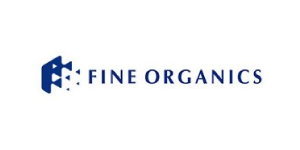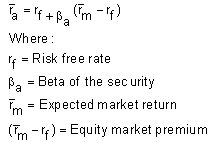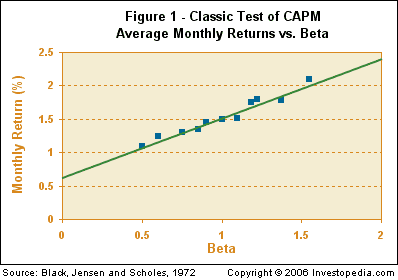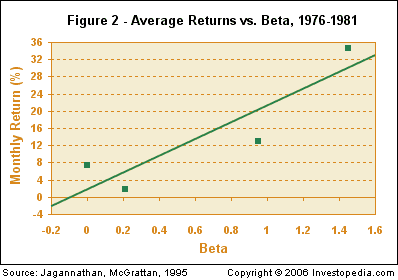The return-hungry investors who are always looking for stocks which could give multibagger returns normally end up picking up stocks which either don’t perform or even if they perform they would give returns less or equal to benchmark returns.
Being able to spot a potential multi-bagger stock early definitely requires some research, along with that, patience plays a key role. Such stocks do exist, and if you have already done your research then the ideal time to pick them is on every decline.
Here are a few parameters that can help you spot a potential multibagger stock early – focus on the growth rate of the industry including future growth potential, which would benefit the stock under consideration.
Apart from that if there are entry barrier that would prevent competition. High-quality management is an added advantage and is like a precondition for the creation of long-term wealth for investors, suggest experts.
The other measure to look at is financial ratios. “Although not strictly defined, but a consistent low debt-to-equity ratio, high returns ratio, and free cash flows are some of the key indicators we have seen in the multibaggers in the last decade,” said, Nidhi Agrawal, an analyst at Angel Broking
Here are 10 mistakes as highlighted by different experts which one should avoid making when hunting for stocks which could potentially give multibagger returns:
1.Herd mentality:
Many investors fall victim to following stock tips by friends, neighbours and so-called experts. These picks rarely work out. In order to make money in equities, the conviction is necessary in an investment, which leads to the ability to hold on to a stock holding through volatile times and sell-offs.
If an investor does not understand a business, he should not invest in the company. If an investor is unwilling to put in the time to research equities, then they are better off letting professionals manage their portfolios.
2.Investing in stocks based on low price:
Just because a stock price is low does not mean that the stock is an attractive investment. I have surprisingly met clients that make the mistake of equating low price to cheap.
I once met a client that would only purchase stocks selling less than a certain price. However, even a stock selling at Rs 15 can be incredibly expensive while a stock selling at Rs 1,500 can often be cheap. Low price does not mean an attractive investment.
3.Holding on to losers:
If a stock is down, there is a reason it is trading lower. It is best to regain losses by moving the money to an attractive investment.
Investors often make the mistake of being unwilling to take a loss on a position. However, if you think about investing logically, it is clear that if a stock has sold off, there is a reason it has done so, and it may never reach back the same levels or may take a long time to do so.
In many scenarios, the investor would be much better off putting money in an attractive alternative investment that would give them a better chance of recouping the loss.
Most importantly, avoiding and minimizing crippling losses is a discipline many investors don’t follow.
4.Investing at high P/E multiples:
An investment return is often determined by the price paid. At 100 times P/E, for instance, an investor is paying 100 times the trailing earnings over the past 12 months of the company. That is an awfully expensive price.
It means it will take the investor 100 years to make back his investment. Very few stocks are able to deliver the growth that justifies this sort of a premium. Therefore, the valuation paid is crucial in determining future returns.
5.Investing in risky bets:
Investors want to make money quickly and take larger speculative bets. These bets often lead to large losses. I have come across many investors that have bet on so-called sure shots, home runs, multibaggers.
In my experience, the vast majority of these investors end up taking losses. These companies often have been hyped up by people on the street that are looking for suckers to pile in.
There are many ways that investors are taken advantage of, and it is up to the investor to recognize the dangers and work with an experienced advisor.
6.Focusing more on macro data than on stock fundamentals:
Blind investment in equity without looking much into the stock specific fundamentals should be avoided.
7. Just going with the hot picks or flavor of the season:
They both need to be analyzed before investing for the earning potential of the company/industry dynamics.
8.Overlooking corporate governance issues:
With the number of scams and frauds coming up, one needs to do best possible due diligence for the corporate governance of the company.
9.Over-allocation/under allocation to particular stock:
While asset allocation is highly subjective and varies from person to person, a prudent investment strategy says that the allocation should be in line with the conviction and risk appetite of the investor.
10.Discontinuing monitoring of stock/key variables:
Once an investor has taken a position in the stock, he/ she needs to regularly monitor the investment thesis, changing variables etc. to understand whether it is on the right track.
Next Read :Fine Organic Industries IPO Review
Being able to spot a potential multi-bagger stock early definitely requires some research, along with that, patience plays a key role. Such stocks do exist, and if you have already done your research then the ideal time to pick them is on every decline.
Here are a few parameters that can help you spot a potential multibagger stock early – focus on the growth rate of the industry including future growth potential, which would benefit the stock under consideration.
Apart from that if there are entry barrier that would prevent competition. High-quality management is an added advantage and is like a precondition for the creation of long-term wealth for investors, suggest experts.
The other measure to look at is financial ratios. “Although not strictly defined, but a consistent low debt-to-equity ratio, high returns ratio, and free cash flows are some of the key indicators we have seen in the multibaggers in the last decade,” said, Nidhi Agrawal, an analyst at Angel Broking
Here are 10 mistakes as highlighted by different experts which one should avoid making when hunting for stocks which could potentially give multibagger returns:
1.Herd mentality:
Many investors fall victim to following stock tips by friends, neighbours and so-called experts. These picks rarely work out. In order to make money in equities, the conviction is necessary in an investment, which leads to the ability to hold on to a stock holding through volatile times and sell-offs.
If an investor does not understand a business, he should not invest in the company. If an investor is unwilling to put in the time to research equities, then they are better off letting professionals manage their portfolios.
2.Investing in stocks based on low price:
Just because a stock price is low does not mean that the stock is an attractive investment. I have surprisingly met clients that make the mistake of equating low price to cheap.
I once met a client that would only purchase stocks selling less than a certain price. However, even a stock selling at Rs 15 can be incredibly expensive while a stock selling at Rs 1,500 can often be cheap. Low price does not mean an attractive investment.
3.Holding on to losers:
If a stock is down, there is a reason it is trading lower. It is best to regain losses by moving the money to an attractive investment.
Investors often make the mistake of being unwilling to take a loss on a position. However, if you think about investing logically, it is clear that if a stock has sold off, there is a reason it has done so, and it may never reach back the same levels or may take a long time to do so.
In many scenarios, the investor would be much better off putting money in an attractive alternative investment that would give them a better chance of recouping the loss.
Most importantly, avoiding and minimizing crippling losses is a discipline many investors don’t follow.
4.Investing at high P/E multiples:
An investment return is often determined by the price paid. At 100 times P/E, for instance, an investor is paying 100 times the trailing earnings over the past 12 months of the company. That is an awfully expensive price.
It means it will take the investor 100 years to make back his investment. Very few stocks are able to deliver the growth that justifies this sort of a premium. Therefore, the valuation paid is crucial in determining future returns.
5.Investing in risky bets:
Investors want to make money quickly and take larger speculative bets. These bets often lead to large losses. I have come across many investors that have bet on so-called sure shots, home runs, multibaggers.
In my experience, the vast majority of these investors end up taking losses. These companies often have been hyped up by people on the street that are looking for suckers to pile in.
There are many ways that investors are taken advantage of, and it is up to the investor to recognize the dangers and work with an experienced advisor.
6.Focusing more on macro data than on stock fundamentals:
Blind investment in equity without looking much into the stock specific fundamentals should be avoided.
7. Just going with the hot picks or flavor of the season:
They both need to be analyzed before investing for the earning potential of the company/industry dynamics.
8.Overlooking corporate governance issues:
With the number of scams and frauds coming up, one needs to do best possible due diligence for the corporate governance of the company.
9.Over-allocation/under allocation to particular stock:
While asset allocation is highly subjective and varies from person to person, a prudent investment strategy says that the allocation should be in line with the conviction and risk appetite of the investor.
10.Discontinuing monitoring of stock/key variables:
Once an investor has taken a position in the stock, he/ she needs to regularly monitor the investment thesis, changing variables etc. to understand whether it is on the right track.
Next Read :Fine Organic Industries IPO Review












